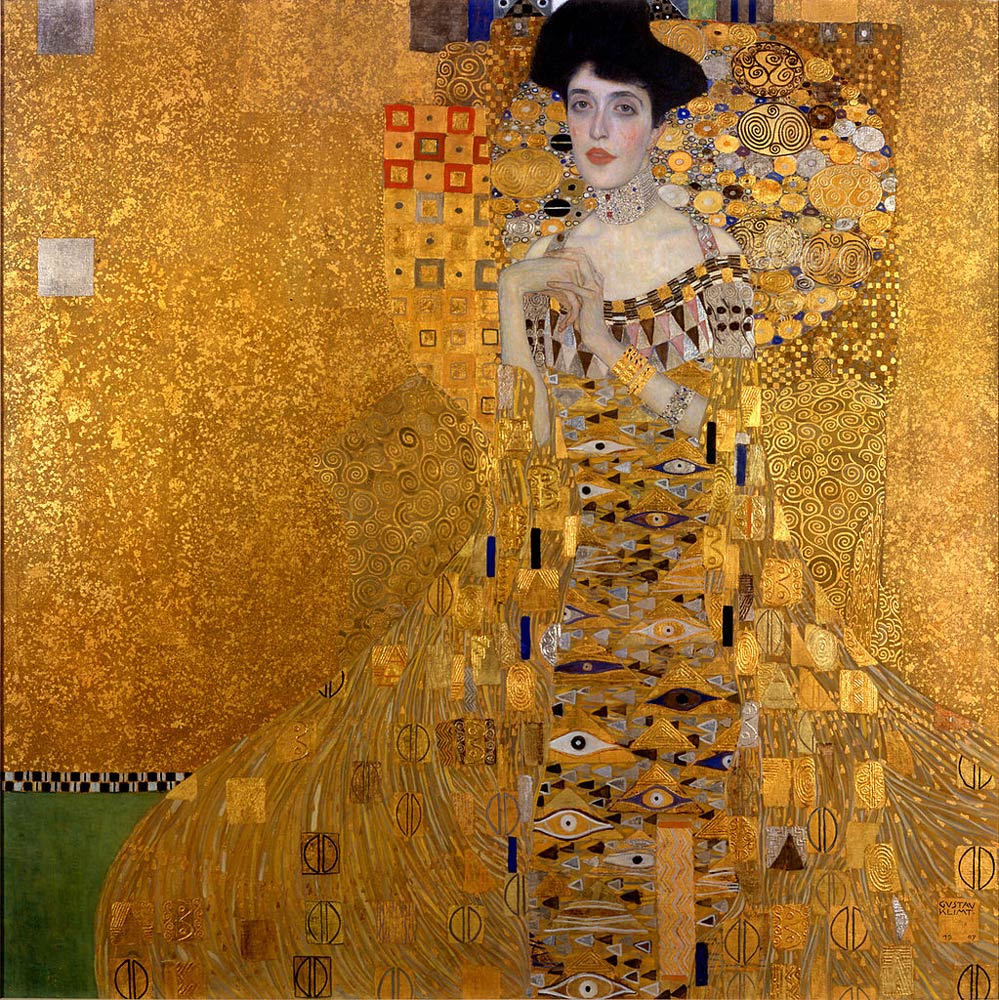Portrait of Adele Bloch-Bauer II
7:00 AM |
| Gustav Klimt, Portrait of Adele Bloch-Bauer I, 1907 |
I pull frantically at the heavy bronze doors of the Neue Gallerie to escape the rain. A doorman inside notices my distress and, while letting out an audible sigh of frustration, grudgingly allows me to enter the strangest building on Fifth Avenue. Sandwiched between two modern apartment structures, the Louis XIII/Beaux-Arts four-story house looks out of place and imposing. My eyes adjust to the darkened interior. The few raised eyebrows from my unorthodox entrance do little to deter me from my quest, an exhibition of photographs by Heinrich Keuhn, Alfred Stieglitz, and Edward Steichen. My soaked shoes squeak on the ornate wooden staircase as I climb to the third floor. I drip through the exhibit, neither inspired nor put-off by the small sepia squares. My ambivalence carries me back down the stairs to the second floor for a quick once-over. My initial curiosity turns into rapture as, across the room, I spot the most beautiful painting I have ever seen.
A more accurate statement would be that the painting spotted me. The eyes looking out from Gustav Klimt's Adele Bloch-Bauer I entrance me. I can't look away. The magnetism of the piece overwhelms my field of vision, and I sit down on a soft bench to marvel at its beauty. The afternoon light hits the gold inlay at the perfect angle, bathing the room in a golden glow. Adele Bloch-Bauer's flawless ivory skin radiates magnificence and splendor. Her clasped hands pull the swirling gown closer to her, enveloping her form in a cascade of gold and silver. The flakes of blue and red complement the luminosity of the gold and bring my gaze to her face.
I can't break eye contact with those eyes. Feelings of longing, wistfulness, and quiet enjoyment transfer from her to me. I feel singled out, entrusted with a secret. The background noise of other museum-goers fades as I look into those eyes. Soon, my field of vision starts to swim. The shine from the gold over-saturates my light receptors, and I have to look away.
As my eyes prick with tears, I realize that I finally get it—the reason why some people break down in front of a Rothko or stare transfixed at a David. Sitting there in my soggy shoes, I opened up enough to pour myself into a painting I must've looked like a fool, smiling like a maniac, chest having with the rush of emotion. Leaving all the judgement and self-consciousness at the heavy bronze doors of the Neue, I was finally able to exchange with a painting a small part of myself. And in return, I received a small part of that painting to keep with me—always.
0 comments